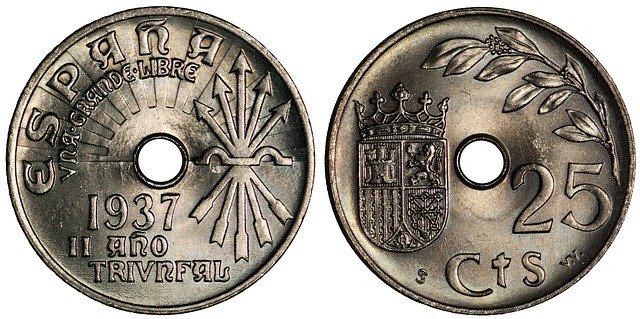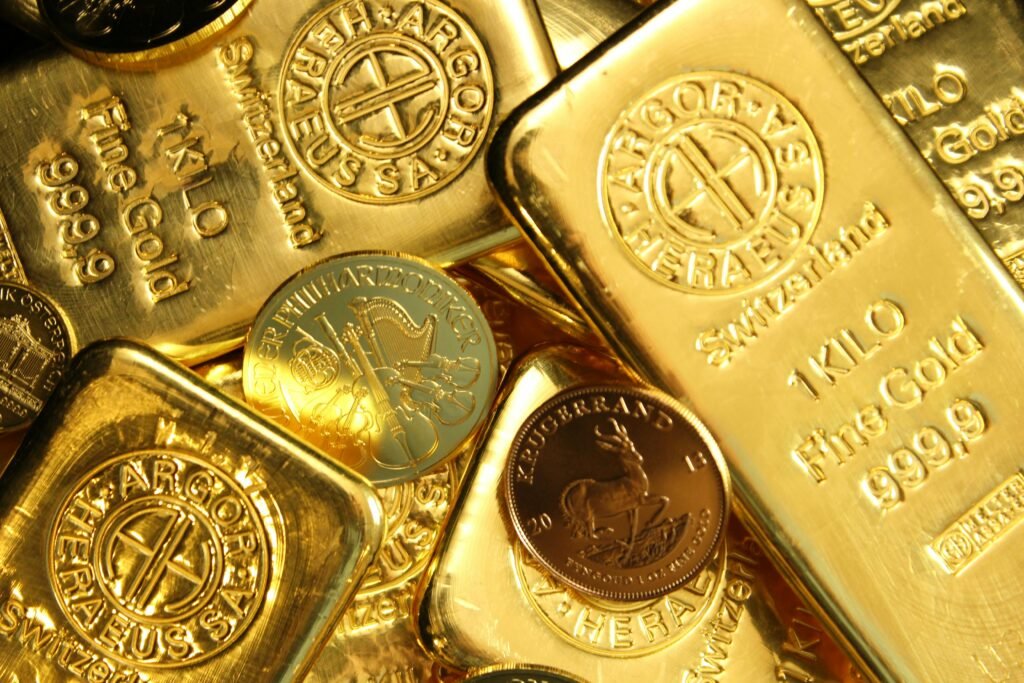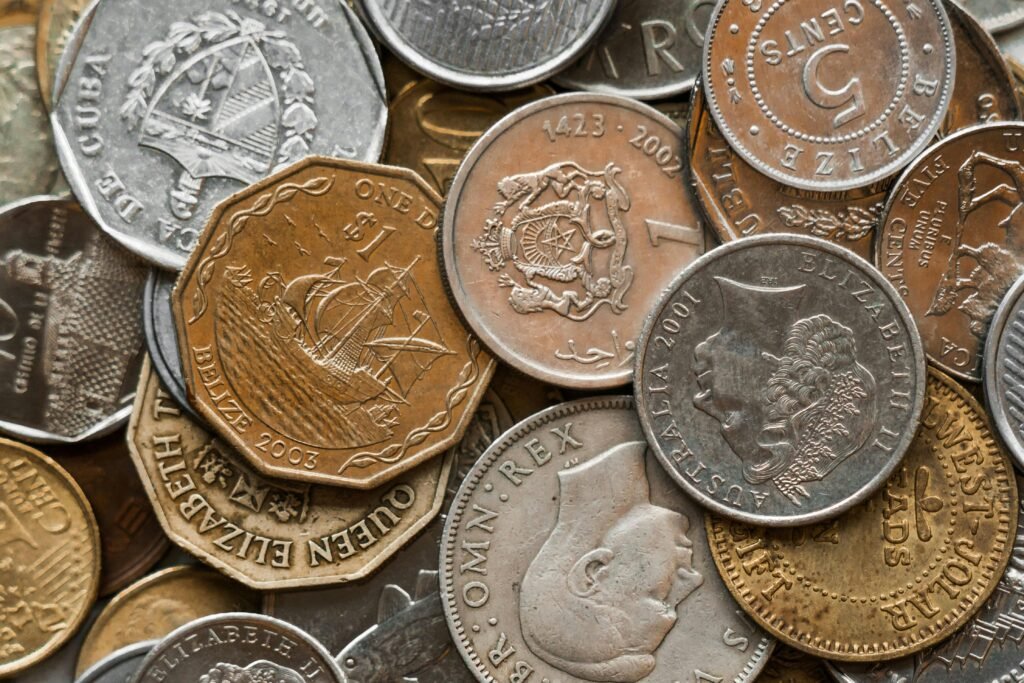Franco & Juan Carlos I Eras: Practical List
Collecting Spanish pesetas from the late 20th century sits in a sweet spot: the coins are recent enough to be affordable and plentiful, yet the key dates are challenging (and fun) to hunt. Since the euro arrived in 2002, millions of pesetas were redeemed or melted, creating a supply squeeze for certain dates and mintmark/star combinations. If you’ve ever been baffled by a 1957 date with a tiny star like *73, or wondered which Franco or Juan Carlos I pieces are truly scarce, this practical, catalog-style guide is for you. You’ll learn how Spain’s unique star-date system works, the denominations that matter, and exactly which dates to prioritize, with rarity tiers and realistic price bands (in EUR) by grade. Expect straight talk about liquidity (great in Spain, thinner abroad), grading quirks, and where to buy safely.
Historical context: Franco era (1939–1975) vs Juan Carlos I (1975–2001)
Spain’s mid-century coinage mirrors its politics and economy. Under Franco (1939–1975), austerity metals (aluminum and brass) dominated early issues before sturdier cupro-nickel returned alongside the larger denominations. Designs emphasized the “Estado Español” motif, heraldry, and economic stabilization projects. Mintages were often high, but survival in collectible grades is not—especially for soft-metal coins that wore rapidly.
The transition to Juan Carlos I (from 1975) brought new portraits, a democratic constitution, and a visible shift toward modernized, tourism-friendly Spain. Denominations proliferated (5, 25, 50, 100, 200 pesetas and beyond) and the country embraced commemoratives marking major events: the 1982 World Cup, the 1992 Barcelona Olympics and Expo Sevilla, and quincentennial “Discovery of America” themes (1989–1990). These series are readily found in Uncirculated sets, but certain circulation dates and silver issues still command premiums.
Finally, the euro conversion (2002): the Bank of Spain accepted pesetas for years afterward, and substantial quantities never made it back—lost, hoarded, or destroyed. That dynamic, plus Spain’s star-date peculiarity, is why this field still has attractive key-date puzzles for collectors.
Understanding Spanish coin denominations
Spanish pesetas of the Franco/Juan Carlos era came in several metals and use-cases. Knowing the metal and denomination helps you predict wear, scarcity in high grade, and storage issues.
Copper & Aluminum (low denominations; pre-1959 to 1960s)
- 1 & 5 céntimos (pre-1959, copper/bronze): scarce in top grades due to heavy wear; more of a pre-Franco bridge.
- 10 & 50 céntimos, 1 peseta (aluminum, 1940s–1960s): extremely light, prone to nicks and corrosion, often scarce in SC/BU.
Cupro-nickel (workhorse circulation pieces; later period)
- 5, 25, 50, 100, 200 pesetas (70s–90s): durable, common in circulated grades, but select date/star combos and low-mintage years are sleepers. Watch for weak strikes—Spain’s presses left high points soft.
Silver commemoratives
- 2,000 pesetas and special issues (mostly .925 silver, various weights from ~12 g up to 27 g+): straddle bullion and collectible categories; liquidity depends on theme and condition.
Gold
- 100 pesetas oro (notably 1966 *67 under Franco): low mintages and strong demand; authentication and grading are critical.
Key dates: Franco era (1939–1975)
The Franco series holds several cornerstones defined by star dates, patterns, and low survival in high grade. Use this key-date map alongside our valuation method. Top-grade key dates often perform best via auction.
1947 *54 — 5 pesetas “Estado Español”
Often cited as a must-have key, with low survival in collectible conditions. Expect heavy wear on hair and the coat of arms; true EBC/SC pieces are prized. Rarity: Scarce to Rare. €60–€250+ from MBC+ to SC depending on eye appeal.
1949 *19–49 — 5 pesetas “proof restrikes”
A classic confuser: nominal date 1949 with various star combos indicating actual striking year (and restrike status). Some are presentation/UNC quality with atypical surfaces. Authentication matters; values hinge on specific star and finish. Rarity: Varies by star. €50–€400+.
1957 *58, *67, *68, *71 — 50 pesetas patterns & lows
Though 1957 dominates the obverse, the star pinpoints production. Certain star years have notably lower mintages or pattern-like characteristics, making high-grade pulls exciting. Rarity: Scarce. €30–€150 in EBC–SC.
1966 *67 — 100 pesetas gold
The iconic Franco 100 pesetas oro with star *67 is a trophy for many Spanish specialists. Beware counterfeits; insist on weight, caliper, and XRF/Sigma for assurance. Rarity: Rare. Market typically tracks bullion plus strong premium; €900–€1,500+ depending on grade and spot.
1969 *69, *70 — “End of an era”
Final Franco-type strikings carry transition interest. In superior grades they serve as historical bookends and can outprice earlier, common star years. Rarity: Common to Scarce; top grades €20–€120.
Key dates: Juan Carlos I (1975–2001)
While many Juan Carlos issues are accessible, select dates and commemoratives form the backbone of a robust collection.
1975 *76 — First portrait issues
These are the first circulating coins of the new king (watch the star). Collectors favor original luster and sharp center details. Rarity: Scarce in SC. €15–€80 depending on denomination and grade.
1980 *80 — Mundial ’82 / World Cup build-up
Spain’s football fever culminated in 1982, but 1980 issues and sets fed the hype. Certain mint products and brilliant uncirculated examples have outsized demand. Rarity: Common in sets, Scarce raw SC. €10–€60 per coin in high grade; thematic sets higher.
1982 — 2,000 pesetas silver (pre-Olympics cycle)
A popular silver denomination with strong nostalgia, often .925. Many survive in capsules; eye appeal drives premiums above melt. Rarity: Common but sought in FDC. €25–€75 depending on weight/condition/mintage.
1983–1984 — Low-mintage 100 pesetas (Cu-Ni)
Select circulation dates show low output or weak survival in SC. Rarity: Scarce. €8–€40 in EBC–SC.
1989–1990 — Discovery of America series
Attractive designs and coherent sets: great for type collectors. Rarity: Common, but set premiums apply. €30–€150 for mini-sets; more for full runs in SC.
1992 — Olympics & Expo
Barcelona/Sevilla commemoratives (base and silver) anchor many modern collections. Scarce FDC packaging and complete set provenance boost value. Rarity: Common to Scarce (by SKU). €20–€200+.
2000 — Final-year circulation pesetas
The last date attracts completionists. Uncirculated rolls and mint sets carry sentimental premium. Rarity: Common, but SC with perfect luster sells. €5–€30 per coin; sets higher.
Understanding Spanish star dates
Spain’s date game is famously tricky. Many coins show a large nominal date on the obverse (e.g., 1957), but the tiny star(s) on the reverse reveal the actual year of striking.
- Why Spain used it: production tools and dies were carried forward; the obverse date stayed fixed while the star date quietly updated annual output.
- Example: *1957 73 means obverse 1957, struck in 1973.
- Impact on rarity: certain star years are much scarcer despite a common nominal date. Catalogs list varieties by star.
Quick decoding cheat-sheet
| What you see | What it means | Checklist action |
|---|---|---|
| Big obverse date (e.g., 1957) + star *58 | Struck in 1958 | Look up by star, not the big date |
| No readable star | Wear or weak strike | Use loupe; lighting from side; sometimes impossible |
| Two tiny stars | Sometimes one contains the date | Photograph macro and compare to references |
Mintage figures and rarity
Spanish mintages are unevenly documented—especially for star splits, prooflike restrikes, and certain presentation issues. Add the Euro conversion melts and you get survival that can deviate wildly from official mintage. For practical collecting:
- Use multiple catalogs (Cayón; Áureo & Calicó) and online databases.
- Track circulated vs UNC outputs: soft metals (aluminum) rarely survive in SC.
- Treat survival rate as the operative metric—rarity = how many nice pieces exist today, not just how many were made.
Grading Spanish pesetas
Spanish sellers often use SC, EBC, MBC (roughly UNC, XF/AU, VF). Two quirks:
- Strike softness: many coins, especially Cu-Ni, show flat high points even when Uncirculated. Learn which high points should show detail for each type.
- Aluminum corrosion and Cu-Ni spotting: knocks eye appeal (and price). In SC, original mint luster and clean fields are king. Paid premiums for “blast white” should be reserved for problem-free coins.
Premium for high grades is real: many star dates are common in MBC, but scarce in SC.
Market and demand
- Domestic Spain: deepest liquidity, best selection, rational pricing for star varieties.
- International: demand thins; educate buyers if you plan to resell outside Spain.
- Price ranges: routine €5–€40 for common UNC types; €50–€250+ for scarcer stars and condition rarities; gold/silver specialties and “set keys” can push €500–€1,500+.
Silver content coins: investment vs numismatic
Spanish 2,000 pesetas and select commemoratives are mostly .925 silver with weights spanning ~12–27 g (and higher in special issues). Decide case by case:
- Bullion approach: buy near melt if condition is average and theme is cold.
- Numismatic approach: pay up for FDC, boxed issues, and popular themes (’92 Barcelona, Discovery series).
- Liquidity: stronger in Spain; abroad, many buyers benchmark melt + small premium.
Complete key date checklist by denomination
Rarity scale (practical): Common (C), Scarce (S), Rare (R), Very Rare (VR). Prices assume typical market; top-tier slabs or special provenance can exceed ranges.
5 pesetas — Top 10 targets
- *1947 54 — S to R — €60–€250+ (MBC+→SC)
- *1949 19–49 (proof/restrike varieties) — Varies — €50–€400+
- *1957 58 — S — €30–€120
- *1957 67 — S — €30–€120
- *1957 68 — S — €40–€150
- *1957 71 — S — €40–€150
- 1963 star scarcer subtypes — S — €20–€80
- 1966 transitional combos — S — €20–€90
- *1969 69 — S — €25–€100
- *1969 70 — S — €30–€110
25 pesetas — Top 5
- 1957 star low outputs — S — €25–€90
- *1975 76 (first JC type) — S — €15–€60
- 1981/82 commemorative types in SC — S — €15–€50
- Odd-rotation/edge varieties — S (var) — €20–€100
- Late 80s low-survival SC rolls — S — €10–€40
50 pesetas — Top 5
- *1957 58 — S — €30–€120
- **1957 *67/68/71 — S — €30–€150
- 1963 star-scarce — S — €20–€80
- *1975 76 (first JC) — S — €15–€60
- 1990s UNC with perfect luster — S in SC — €8–€35
100 pesetas — Top 5 (Cu-Ni & Gold)
- *1966 67 — 100 pesetas gold — R — €900–€1,500+
- *1975 76 (Cu-Ni first JC) — S — €20–€80
- 1983 low-mintage Cu-Ni — S — €8–€40
- 1984 low-mintage Cu-Ni — S — €8–€40
- 1990s proofs/specials in FDC — S — €20–€120
200 pesetas — Collectible calls
- Early JC issues in SC — S — €10–€40
- Thematic minisets — S — €25–€120 (set-dependent)
2,000 pesetas — Commemorative highlights
- 1982 pre-Olympic silver — C/S — €25–€75
- 1992 Olympic/Expo series — C/S — €30–€150+ depending on completeness/packaging
- Discovery (1989–90) — C/S — €30–€150 (sets carry premiums)
Tip: for all above, grade drives price. A “difficult star” in MBC may trail a “common star” in gem SC.
Tip: for all above, Key dates ≠ instant liquidity—learn how quickly they sell.
Sets and complete collections
- Year sets: building one per year across denominations spotlights star quirks and quickly surfaces scarce pieces.
- Commemorative series: World Cup ’82, Discovery 1989–90, ’92 Olympics/Expo—ideal for display and resale.
- Type sets: one of each major design (Franco + JC) is a concise, budget-friendly path.
- Typical values: common year sets €15–€60; premium commemorative sets €80–€300+, complete mega-sets higher.
Where to buy Spanish pesetas
- Spanish dealers & coin shops (Madrid, Barcelona, Valencia): best depth, fair pricing on star varieties.
- Online in Spain: Todocoleccion, eBay.es, reputable specialty dealers.
- International dealers: thinner stock; expect to explain star dates.
- Coin shows in Spain: bring a loupe and a simple star-date checklist; great for upgrading condition.
Authentication concerns
Counterfeits are less common than in US/UK hotspots, but high-value items—Franco 100 pesetas gold (1966 *67), certain proof restrikes, and popular silver commemoratives—attract fakes. Also beware altered star dates (adding/reshaping digits within the star). Use:
- Weight/caliper checks
- Edge and die-detail comparisons
- XRF/Sigma for gold/silver
- Purchase from reputable Spanish houses and demand return rights.
Building a pesetas collection: strategies
Type collecting (affordable, achievable): perfect for getting breadth quickly; upgrade to EBC/SC over time.
Key-date focus (selective, pricier): pursue the shortlists above, but be patient for eye appeal.
Commemorative series (thematic): complete World Cup/Olympics/Discovery sets look fantastic and are easy to understand.
Silver content hybrid: buy 2,000 pesetas near melt + modest premium; resell liquidity is strongest in Spain.
Budget rules of thumb
- €100–€300: type set in MBC–EBC with a couple of SC highlights.
- €300–€1,000: add Franco stars in EBC/SC, a *’75 76 JC piece, and a Discovery/Olympic mini-set.
- €1,000–€3,000: target scarcer stars in SC and a gold 100 pesetas if authenticated and fairly priced.
Resources and references
- Catalogs: Cayón, Áureo & Calicó (AC), indispensable for star-date specifics.
- Web: Numismática Visual, specialized Spanish blogs/forums; OMNI for broader Iberian material.
- Associations: Spanish numismatic clubs; local coin show calendars.
- Grading help: see our Coin Grading Photo Guide (Sheldon vs SC/EBC/MBC) for cross-reference.
Future outlook
Will younger collectors care? The nostalgia wave 20+ years post-euro is already visible: people who used pesetas now have disposable income and want pristine examples of what they remember. We expect steady interest domestically, continued global niche appeal, and outperformance for genuinely scarce star dates in top grades. It’s a specialized but accessible category—especially if you learn the star system and target condition.
Accessible but specialized collecting area
Spanish pesetas from the Franco and Juan Carlos eras offer a rewarding blend of history, hunt, and affordability. If you remember only one lesson, make it this: the star date rules rarity. Build from type sets into key stars, insist on clean SC where possible, and source from experienced Spanish dealers. With a simple checklist and a 10× loupe, you’ll avoid overpaying and assemble a collection that’s meaningful, liquid (in Spain), and a pleasure to own.
FAQs
What is a star date in Spanish coins?
A tiny star near the date contains digits showing the actual striking year, which can differ from the big obverse date. Example: *1957 73 = struck 1973.
Are pesetas valuable outside Spain?
Liquidity is strongest within Spain. Abroad, values can lag unless the buyer understands star varieties. Premiums concentrate in high grade and true keys.
Should I slab Spanish coins?
Only for top-tier SC examples or gold/silver keys where authentication adds resale value. Many collectors prefer raw coins in original mint wraps/capsules.



